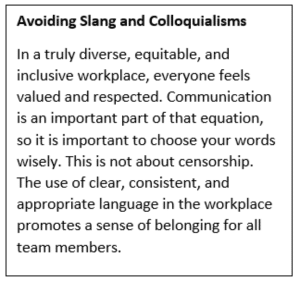February 14, 2022
By Tricia Katebini, CPA, MBA, Partner and Max Manley, CPA, Partner
This article is based on a presentation of the same title given at the 2021 GWSCPA Nonprofit Symposium.
As new variants emerge and the pandemic continues, it is clear a mostly remote work arrangement will continue in the near term. In fact, a hybrid model will likely replace daily office work. While this improves the stress and expense of commuting, there will be a long-term impact on leadership and mentoring in the workplace. Today’s leaders and those on the leadership track have a challenge ahead of them – how do you lead effectively in a virtual environment with less face-to-face interaction and fewer organic opportunities for meaningful connection?
Empathetic Leadership
Demonstrating empathy doesn’t require hours of training or a specialized skill set. According to the Center for Creative Leadership, there are five ways organizations can encourage empathy:
- Talking about empathy;
- Teaching listening skills;
- Encouraging genuine perspective taking;
- Cultivating compassion; and
- Supporting global managers.
Why do empathetic leaders have an advantage? They both inspire and motivate their team. Empathetic leaders understand the needs of others and are aware of the feelings and thoughts of individual team members. This trait not only supports high performing teams, but it is also proven that managers who practice empathetic leadership are viewed as better performers by their own supervisors. They work effectively with people from a variety of teams, departments, countries, cultures, and backgrounds.
Leaders who want to cultivate a high-performing team and show them support should do four things:
- Watch for signs of burnout in team members. The pandemic is taking a significant toll on workers around the globe and almost everyone is feeling some degree of stress at work.
- Show sincere interest in their needs, hopes, and dreams. Many times, this is not even related to work. Encourage team members to pursue hobbies and personal goals outside of work to free up their minds and tap into their creativity. They will be happier people.
- Demonstrate a willingness to help an employee with personal problems. We have all had personal problems that take our focus away from work at least temporarily. A little kindness goes a long way during times of difficulty.
- Show compassion with other people who disclose a personal loss. As a leader, acknowledging and empathizing with someone’s personal loss highlights our human similarities across diverse teams. This has never been more pronounced than during the pandemic with so many lives lost or forever changed.
A Winning Combination: Trust, Confidence, and Cooperation
At some point in their careers, most leaders will read The New York Times best seller, Emotional Intelligence by Daniel Goleman about using emotional information to guide behavior and adapt emotions to the environment. The four key components of emotional intelligence are self-awareness, self-management, social awareness, and relationship management. Empathetic leaders tap into their emotional intelligence to connect with their employees on a personal level and unlock their motivations while seeking to understand. This connection allows leaders to build trust, provide the right support to individuals, and create social cohesion within their teams.
“I’ve learned that people will forget what you said, people will forget what you did, but people will never forget how you made them feel.” – Maya Angelou
The TCC Model of Trust, Confidence, and Cooperation provides the foundation for high performing teams with guidance from empathetic leadership. In the model, trust relies on the willingness to make oneself vulnerable to another based on a judgement of similarity of intentions or values. Confidence is the belief, based on past performance, that certain future events will occur as expected. Finally, both trust and confidence, in a range of combinations, leads to various forms of cooperation.
From Understanding Social Trust, Trust, Confidence and the TCC Model
The TCC model examines the interaction between trust and confidence in establishing successful and well-functioning teams. According to the model, within the professional workplace context, trust is based on social relationships, and therefore a leader can build the trust of their employees through promoting feelings of team membership, and values such as morality, integrity, fairness, and caring. Confidence on the other hand is based on the expectation that taking certain actions (as proposed by a manager or team leader) will lead to successful outcomes. A leader can earn the confidence of their employees through providing opportunities for experience, building employee familiarity with rules and procedures, and demonstrating high levels of competence. By establishing both trust and confidence, workplace teams can ultimately reach higher levels of cooperation and positive collaboration.
The Importance of Mentoring
Do you want your valued employees to be invested in their own success as well as that of the organization? Mentor them! As with leadership, mentoring remotely has its challenges but it is well worth the investment of time and resources. In today’s competitive labor market, if you are not willing to invest in your employees, someone else WILL.
Mentoring is a clear indicator of your effectiveness as a leader. Team members in formal mentoring arrangements are more engaged with their employer, better understand the organization’s goals and vision, and add more to the team’s productivity. Mentored employees feel valued by their employer leading to increased loyalty and commitment. Strong mentorship programs not only attract motivated and highly skilled employees, but they also develop the leadership skills of the next generation of leaders.
Strong mentoring programs include these best practices:
- Proactive maintenance of connections;
- Focused conversation;
- Advance preparation;
- Defined expectations and established boundaries;
- Goal setting;
- Follow-through on commitments;
- Leveraging technology;
- Reverse mentoring; and
- An effective feedback process.
Employees have come to expect at least some informal mentoring as part of their employment agreement. If you are new to mentoring or need to reset your program in 2022, take advantage of some of the benefits of mentoring in a virtual environment to begin or revise your program. A virtual mentoring program is typically lower in cost to implement using the video conferencing technology already available to you. Operating virtually also provides a greater degree of flexibility and a larger pool of mentors and mentees from which to choose. Just be mindful that virtual interactions are quite different than face-to-face communication. Not only is it more difficult to develop deep meaningful relationships that feel natural, but you also miss non-verbal communication as well as the opportunity for informal conversations. There is an art to virtual mentoring!
Overcoming the Challenges of Virtual Leadership
We are all familiar with the challenges of working remotely. Not everyone has the right tools or a quiet environment conducive to focused work. Even if they have the right setting and technology, many still find the lack of structure and isolation difficult. Leaders must keep these factors in mind when setting deadlines and expectations – what works for one team member may not work for another.
Effective leaders not only accept these challenges but look for creative ways to overcome them. This is where technology becomes an advantage. Communication tools like Slack and Zoom chat, for example, allow team members to touch base quickly and get the answers they need without another email. Project management tools like Microsoft Project, Monday.com, and Trello can also improve team communication and efficiency, and many are easy to learn and implement. Beyond communication, some team members can also benefit from noise-canceling devices, website blockers, and timers. Meet with each member of your team to better understand their challenges and look for opportunities to help them become better contributors.
For some team members, success really comes down to structure and well-defined expectations. As the leader, communicate clear guidelines to your team to set specific working hours, agreed-upon response times, and establish your team’s communication style. (See our discussion on avoiding slang and colloquialisms.) Encourage team members to discuss milestones and goals, schedule frequent check-ins, and share productivity tips among themselves – without your direction.
Conclusion
Mentoring, sponsoring, and advocating for your team are at the core of what makes a good leader. No matter where or how it occurs, successful leadership is about listening intently with empathy, and asking better questions. This is particularly important as our teams spend more time interacting virtually than in face-to-face settings. As the workplace evolves, refining your leadership skills should be an ongoing process; an empathetic leader is an asset to any organization.
If leadership and mentoring programs do not exist within your organization (or you would like to supplement these resources), opportunities to develop your skills as a leader are available throughout the accounting industry (consider Convergence Coaching’s Transformational Leadership Program or participate in the AICPA’s Leadership Academy, for example). Those looking to build a mentoring relationship with someone they can trust to assist them in their career journey should research mentoring programs within their state accountancy societies. (All of these programs need mentors as well!)



